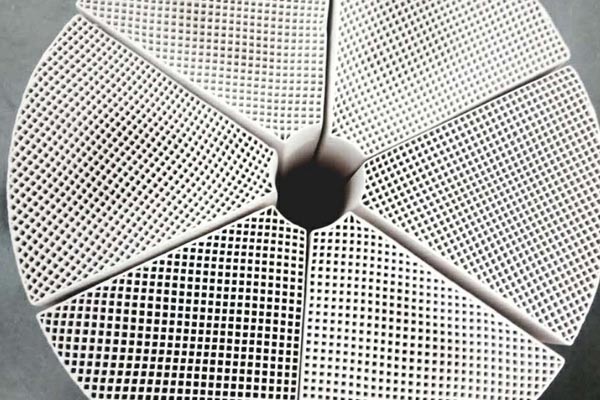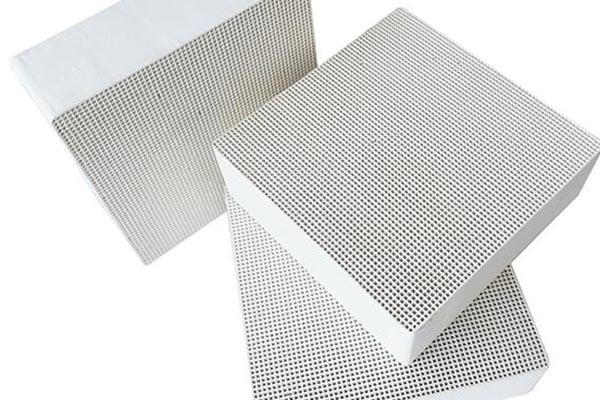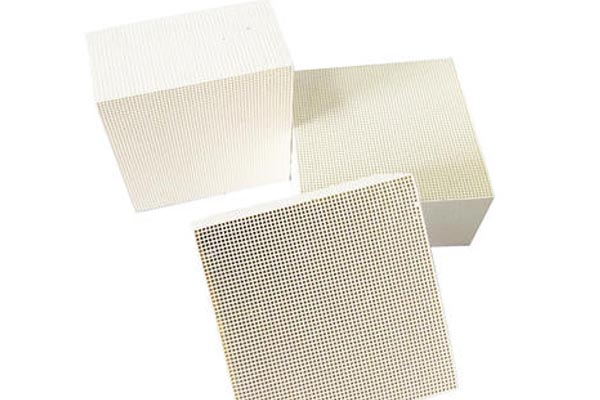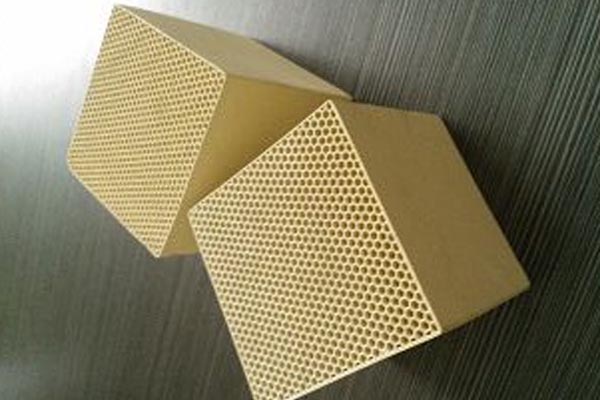
The zeolite wheel adsorption purification device is a gas purification device that can continuously perform adsorption and desorption operations. major The two sides of the zeolite runner are divided into three areas by special sealing devices: adsorption area, desorption (regeneration) area and cooling area. The working process of the system is as follows: the zeolite runner rotates continuously at a low speed and circulates through the adsorption area, desorption (regeneration) area and cooling area; When the exhaust gas with low concentration and large air volume continuously passes through the adsorption area of the runner, VOCs in the exhaust gas are adsorbed by the zeolite of the runner, and the gas purified by adsorption is directly discharged; The organic solvent adsorbed by the wheel is sent to the desorption (regeneration) area along with the rotation of the wheel, and then continuously passes through the desorption area with small amount of hot air, major Jiujiang VOCs adsorbed on the runner are thermally desorbed in the desorption area to achieve regeneration, and VOCs waste gas is discharged with hot air; After the runner is transferred to the cooling area for cooling, it can be re adsorbed. With the continuous rotation of the runner, adsorption, desorption and cooling cycles are carried out to ensure the continuous and stable operation of waste gas treatment

High honeycomb zeolite molecular sieve content The zeolite content of the zeolite runner is proportional to the adsorption concentration efficiency, major Therefore, when choosing to purchase zeolite runner, the matching zeolite content should be selected in combination with the emission concentration of enterprise exhaust gas pollutants. 2、 With good hydrophobicity, choose to purchase zeolite with large specific surface area. 2) Select inspection equipment to test the hydrophobicity of equipment production When the air humidity is greater than 60%, calibrate the equipment. If the equipment is blocked and the machine works abnormally, it indicates that the equipment has poor hydrophobicity, and you should carefully consider whether to purchase the equipment.

major Because the silicon (aluminum) oxygen tetrahedron of natural zeolite crystal has many holes and channels, which occupy cations and water molecules. When some other goods are completely dehydrated after baking, the crystal skeleton is not damaged, but forms large holes on the inner surface, which can absorb and store a large number of molecules, so it has the characteristics of large adsorption capacity and high selectivity. There are cavities and channels in the crystal structure of zeolite with large adsorption capacity, whose volume accounts for more than 50% of the total volume of zeolite crystals. Moreover, the micropores of zeolite are evenly distributed, and the pore size is small, which is equivalent to the molecular size of general substances. The internal surface area of zeolite crystals can reach more than 1000 square meters. Therefore, the adsorption capacity of zeolite is particularly large. production In different zeolite minerals, the proportion of silicon and aluminum is different, and the different proportion will cause some characteristics of zeolite changes, such as ion exchange and acid resistance.

Molecular sieve has clear pore cavity distribution, extremely high internal surface area (600m2/s), good thermal stability (1000 ℃), and adjustable acid site center. The acidity of molecular sieve mainly comes from three coordinated aluminum atoms and aluminum ions (AlO)+on the framework and in the pores. OH based acid sensitive site center on molecular sieve HY obtained by ion exchange, Jiujiang The aluminum ions outside the framework will strengthen the acid site and form the L acid site center. Polyvalent cations such as Ca2+, Mg2+and La3+can show the acid site center after exchange. The reduction of transition metal ions such as Cu2+and Ag+can also form acid site centers. In general, the higher the Al/Si ratio, the higher the specific activity of OH group. The modification of zeolite acidity can introduce protons through direct exchange of dilute hydrochloric acid. This method often leads to dealumination of molecular sieve framework. So NaY will become NH4Y and then HY. Because there are uniform small internal pores in the molecular sieve structure, when the molecular linearity of reactants and products is close to the pore size of the crystal, the selectivity of the catalytic reaction often depends on the corresponding size of the molecule and pore size. major This selectivity is called shape selective catalysis. There are two mechanisms leading to shape selectivity. One is caused by the difference of diffusion coefficient of molecules participating in the reaction in the pore cavity, which is called mass transfer selectivity; The other is caused by the space limitation of the transition state of the catalytic reaction, which is called transition state selectivity.



